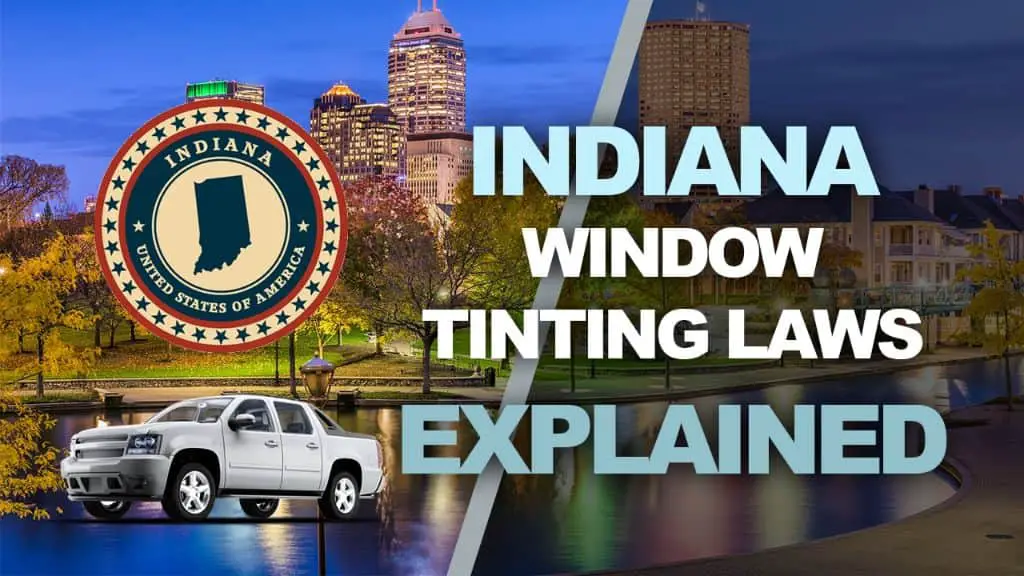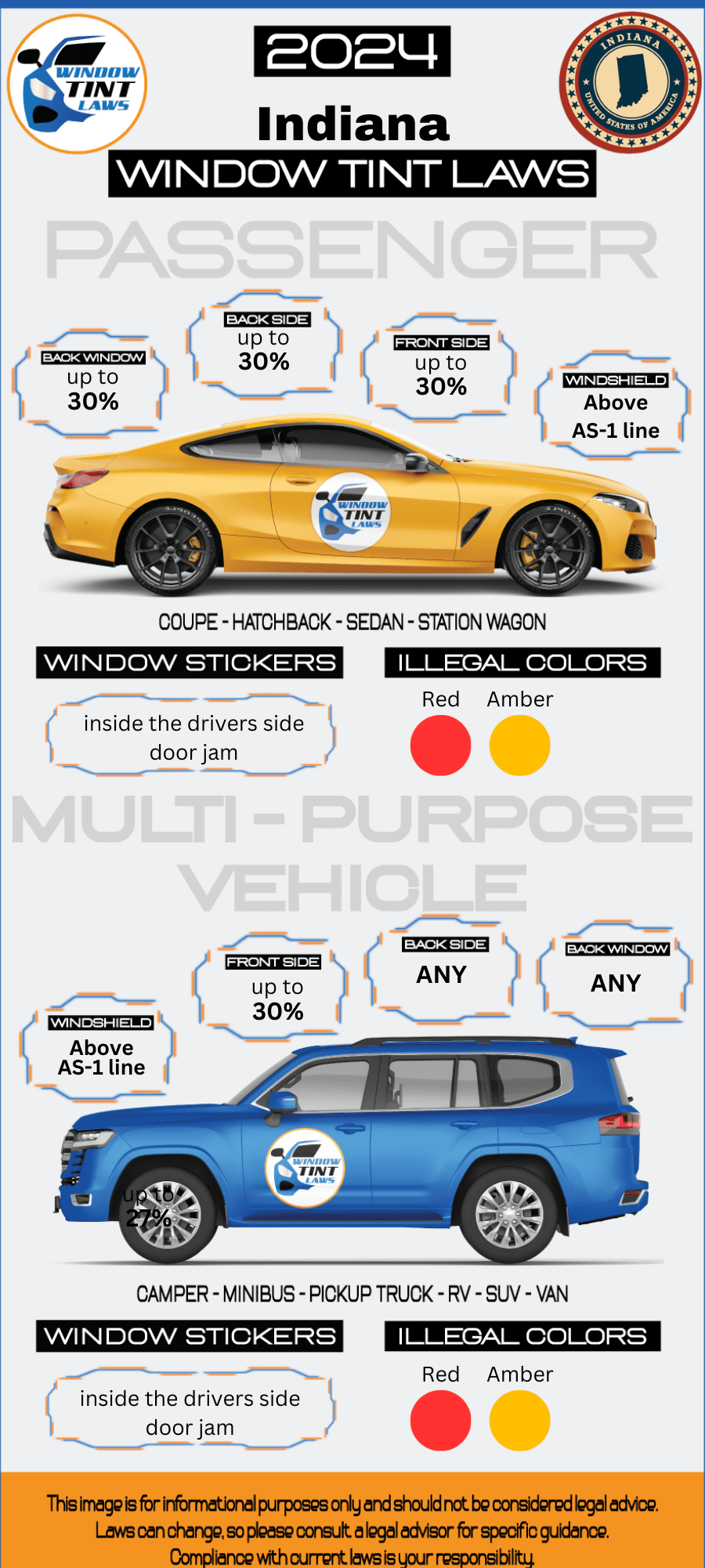

Article Created by Ryan Pietrzak
Last updated on February 14, 2024Indiana Tint Laws – 2024 Updated Legal Tint Limit
Please note that Indiana Tint Laws Regulation can change daily and may be interpreted differently at the city or county level. We recommend verifying this information with your local DMV or law enforcement agencies. We have manually fact-checked this content using official state resources. Indiana enacted tinting laws in 2003. If any information provided is incorrect or outdated, please contact us so we can make the necessary corrections. Thank you.
2024 Indiana Tint Laws – Legal Tint Limit For Passenger Vehicles
- Front Windshield: Non-reflective tint is allowed above the manufacturer’s AS-1 line.
- Front seat side windows: up to 30% tint darkness allowed
- Back seat side windows: up to 30% tint darkness allowed
- Rear window: up to 30% tint darkness allowed
2024 Indiana Tint Laws – Legal Tint Limit For Multi-Purpose Vehicles
- Front Windshield: Non-reflective tint is allowed above the manufacturer’s AS-1 line.
- Front seat side windows: up to 30% tint darkness allowed
- Back seat side windows: Any tint darkness can be applied several (unspecified) inches from the top of the window.
- Rear window: Any tint darkness can be applied several (unspecified) inches from the top of the window

- Medical exemptions: Indiana tint law permits darker tints on front side windows with a doctor’s note
- Indiana tint law prohibits metallic or reflective tint on any of the windows
- Indiana tint law is statewide with no additional local regulations
- Violating Indiana tint law can result in a ticket for a window tint violation is typically around $25. However, the exact amount can vary depending on the jurisdiction and the discretion of the issuing officer. Repeat offenses may lead to higher fines.
What does VLT Mean according to Indiana Tint Laws?
- Window tint film’s light transmission is measured as VLT (Visible Light Transmission) and each state has its own legal limits for VLT on car windows.
- A HIGHER VLT means that more light is allowed to pass through the window tint film.
- Example: a 75% tint will allow 75% of the light to pass through whereas a 5% tint will only allow 5% of the light to pass through, making the 5% tint a much darker film.
- Indiana window tint laws has specific VLT limits for Passenger Vehicles and Multi-Purpose Vehicles.
FAQ’s Regarding Indiana Tint Laws and Indiana Legal Tint Limit
What is the darkest legal tint in Indiana?
In Indiana, the darkest legal window tint is 30% VLT (Visible Light Transmission) for all side and rear windows of passenger vehicles. This means the tint must allow at least 30% of the light to pass through
Are police exempt from window tint laws in Indiana?
Yes, in Indiana, police vehicles are typically exempt from the state’s window tint laws. This allows law enforcement vehicles to use window tint that is darker than the legal limit for civilian vehicles.
How do I get a tint waiver in Indiana?
To obtain a window tint exemption in Indiana for medical reasons, you must submit a completed Application for Window Tint Medical Exemption to the Indiana Bureau of Motor Vehicles, along with a physician’s statement detailing the medical necessity for darker tint. If approved, this exemption allows for window tint that is darker than the standard legal limits
How much is a tint ticket in Indiana?
In Indiana, the cost of a ticket for a window tint violation can vary, but it is generally around $25. However, this amount may differ based on local ordinances and the discretion of the issuing officer.
Can you get pulled over for tint in Indiana?
Yes, in Indiana, you can be pulled over by law enforcement if your vehicle’s window tint is suspected to be darker than the state’s legal limit. This could lead to a ticket or a requirement to remove the non-compliant tint.
How to get a Tint Exemption in Indiana
Indiana permits medical exceptions. Medical reasons must be attested to by a physician or optometrist licensed to practice in Indiana, and the physician’s or optometrist’s certification of that condition must be carried in the vehicle. The physician’s or optometrist’s certificate must be renewed annually.
For more information regarding window tint medical exemptions in _____ you can checkout this resource:

Ryan Pietrzak
Creator of Windowtintlaws.us
